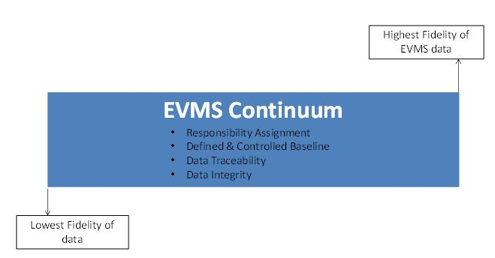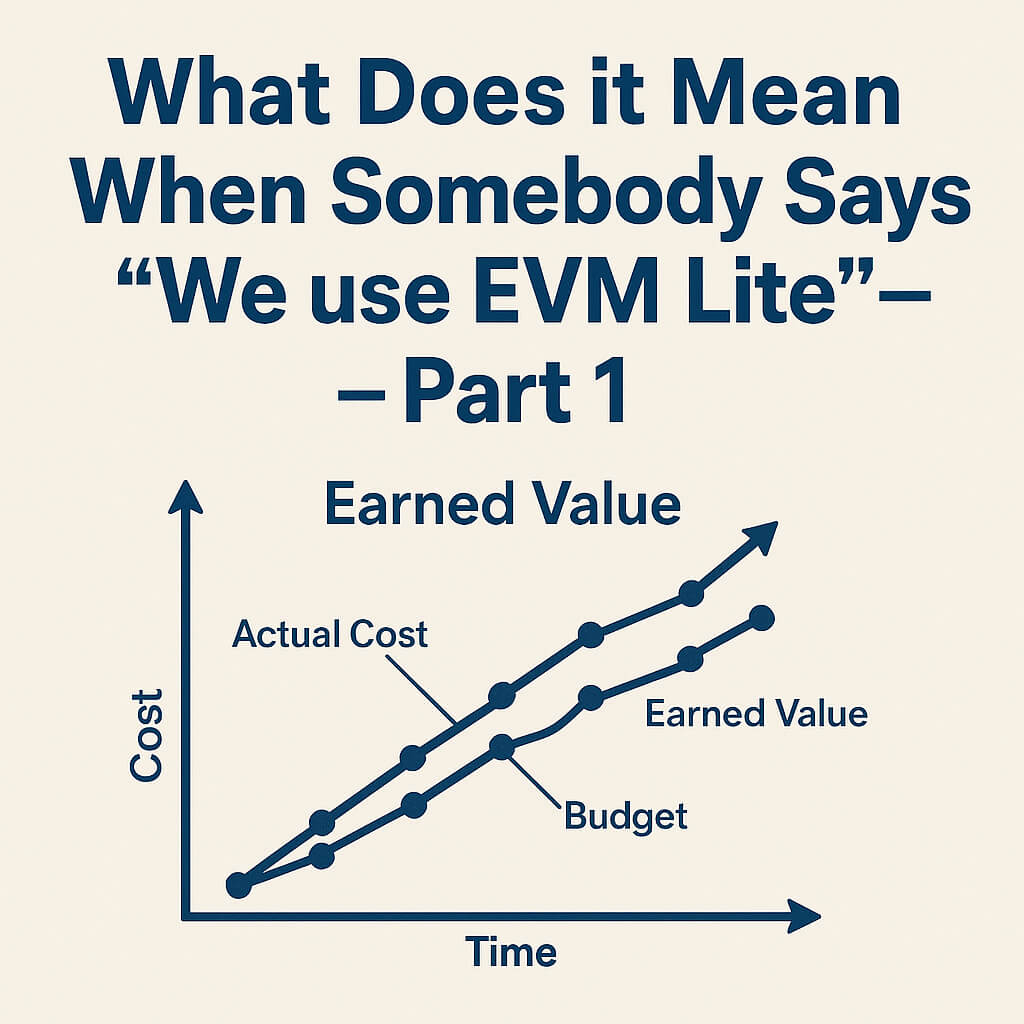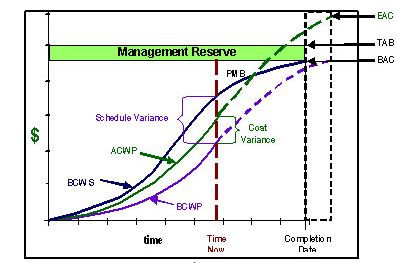DFARS 252.234-7001 – “Thou Shalt Do Earned Value”
Overview
Earned Value Management (EVM) have become increasingly relevant for industries like Biotech and Pharma.
Hypothetically, your organization has received a Request for Proposal (RFP) and wishes to bid for the work. The RFP includes the clause DFARS 252.234-7001 if the cost to the government is anticipated to be in excess of $20M. What choices does a company have? First, the clause could be ignored and the bid made as Firm Fixed Price (FFP). However, this places the entire cost risk on the company and unless the scope is well known and routinely achievable, this risk may be unacceptable.
Otherwise, with any other kind of contract, be it incentive or cost plus, it will require the company to comply with the Earned Value Management Systems (EVMS) clause. Assume that the proposal is anticipated to be in excess of $50M (as this is the most stringent requirement), your company does not have an EVMS, and it is decided to bid and include a plan to reach compliance.
The subject DFARS Clause requires that a contract be managed with a fully compliant Earned Value Management System as defined in EIA-748 (the latest revision is “C” dated March 2013). If a system has not been validated, meaning accepted by the Government, the company must include in its proposal how validation will be achieved.
This includes a description of the system proposed to be used including an annotated checklist which addresses each of the 162 management system characteristics, proposed changes to the current system, resumes of the personnel who will design and implement a compliant system, how the Guideline requirements will be met, subcontractor compliance, and a time-phased plan to achieve EVMS compliance.
What is the Extent of the Requirement?
The answer to this question is the object of the first steps towards full Earned Value Management (EVM) system design, implementation, operation, and acceptance.
Step 1: Familiarize company management with the EIA-748 Guideline requirements. This is usually done with a two to four hour presentation to management conducted by experienced EVMS personnel. The single most important outcome from this presentation, leading to a successful EVMS implementation and acceptance by the customer, is senior management’s commitment in fully supporting the steps that follow.
Step 2: Review the current management control systems including existing software and identify which of these fully support the earned value requirements. This information is then used to develop an implementation plan of the necessary tasks, their associated schedule as well as the costs of needed changes.
Step 3: This significant step helps senior management to:
-
- Review the cost benefit of the EVMS and either change the proposal strategy to a Firm Fixed Price (FFP) bid and stopping the EVMS process without significant investment
- Decide to implement the system a step at a time and proceed with the design and subsequent implementation and maintenance of the EVMS; or
- Simply not bid
The Choice – Proceed to Implement
Assuming the answer is to proceed, the question becomes what are the next steps?
First, the management system is divided into the required subsystems such as: work definition and assignment, planning and scheduling, budgeting, work authorization, accounting, material and subcontract management, data analysis and reporting, and change control. Next, pertinent existing information and materials (forms, documents, reports, etc.) are gathered that support these same subsystems. Interviews are also conducted to determine the “real” needs. After collecting the existing system documentation and understanding the processes from interviews conducted, the system documents are placed in sequence on wall flow charts, commonly called storyboards, which allow the identification of system/subsystem “holes” and/or “gaps and overlaps” versus the EVMS requirements. New forms, procedures, software modifications and other additions can then be identified and developed to fill these holes.
At this point in the process, the final management system design should be developed and a revised implementation plan/schedule presented to senior management for approval. Upon approval, the first step is now accomplished.
Second, is to develop an EVMS compliant System Description, procedures and associated desk top instructions. The System Description is a document that defines the management system much like the operator’s manual to your automobile. It is a “what to do” document and includes definition of the processes, depicts forms and reports used in and produced by the system, and describes how the system meets the requirements of the EIA-748 Guideline requirements. This is typically organized by the Nine Process Groups of organizing, scheduling, etc. The procedures and desk top instructions define how to do it and support the requirements outlined in the System Description. Procedures and desk top instructions define the detailed steps necessary for all requirements and what organizations are responsible for those steps. With the system documentation in place, and upon its presentation and acceptance by management, the second step is now complete. You could say that you have now designed and built a new automobile and it is time to train people how to drive.
The third step is to train all levels of management in the operation and use of the EVM System. This can be accomplished in groups (functional management, control account managers (CAM), IPT Leads, senior management, etc.), and/or by one-on-one training.
Fourth, once all of the above has been accomplished, the company is ready to apply and operate the EVM system on a project. Ideally the project that was proposed has now been won, and it is the one with which the system will be implemented—and used. It is much easier to put the system in place and begin to operate it on a new project/contract than it is to try and retrofit it onto an existing project. This entails following the definition, planning, and authorization subsystem steps defined in the approved Management System Description, procedures and associated desk top instructions, and then producing the required data for analysis and reporting to management and the customer. Generally speaking, three months of system data and reports are required by the customer before the next step can be undertaken.
Fifth, the next major step is the customer’s review of the EVM system and its subsequent acceptance and validation. Once system operation has begun, at least one visit will be conducted by the customer’s EVMS representative (in the case of DOD contracts it is the Defense Contract Management Agency (DCMA)). The visit(s) is conducted to assess the progress against the plan that was submitted in the original proposal. The visit(s) is usually two to three days in length and conducted by three or four well qualified government representatives.
Once an organization conducts a self assessment and informs the reviewing agency that it is ready for their review, that agency reviews the documentation provided by the organization to determine readiness for a Validation Review. This review will then be scheduled with the company. It may be quite some time in the future, as there are very few DCMA representatives available and there are many companies requiring reviews of one kind or another. A “data call” will occur which is a request for information such as 12 months of Contract Performance Reports (CPRs) or Integrated Program Management Reports (IPMR), the baseline logs from the beginning of the program, etc. When the review does occur, the program team should plan on 15 to 20 reviewers for at least two weeks. The company will need to provide all of the support the review team requires. This will include work rooms, computers, printers, and other elements that will be specified in the review notification. Other preparations will include development of in-briefings, construction/updates of storyboards, and conduct of mock interviews with project and management personnel to prepare them for their government interviews.
The company cannot expect to complete the Validation Review without action items being assigned. The DCMA will create Discrepancy Report(s) which will lead to Corrective Action Reports (CARs) that are rated by the degree of severity from 1 to 4. These system discrepancies will each require a Corrective Action Plan (CAP) to be developed and accepted by the DCMA, monitored, and progress reported to the DCMA. Once the DCMA has accepted all of the responses, the company can expect to receive a formal “System Acceptance Letter,” but it should not heave a sigh of relief – there is still one more step to be accomplished.
The On-Going Process
This last step is Surveillance, the development and execution of a plan that ensures continued system operation in accordance with the EIA-748 Guidelines. History has proven over the past 46 years that EVM Systems’ operation tends to degrade over time. This occurs because of taking short cuts, lack of continued management commitment and emphasis, degrading system use, a “we are too big to be failed” attitude, and an occasional laissez-faire attitude.
While all of the steps except this last one can usually be accomplished in nine months to a year, the last one, Surveillance, will need continued operational discipline as long as a validated EVM system is required.
If you have questions on the DFARS clause 252.234-7001 or would like to explore EVM training options, please feel free to contact Humphreys & Associates.
DFARS 252.234-7001 – “Thou Shalt Do Earned Value” Read Post »









